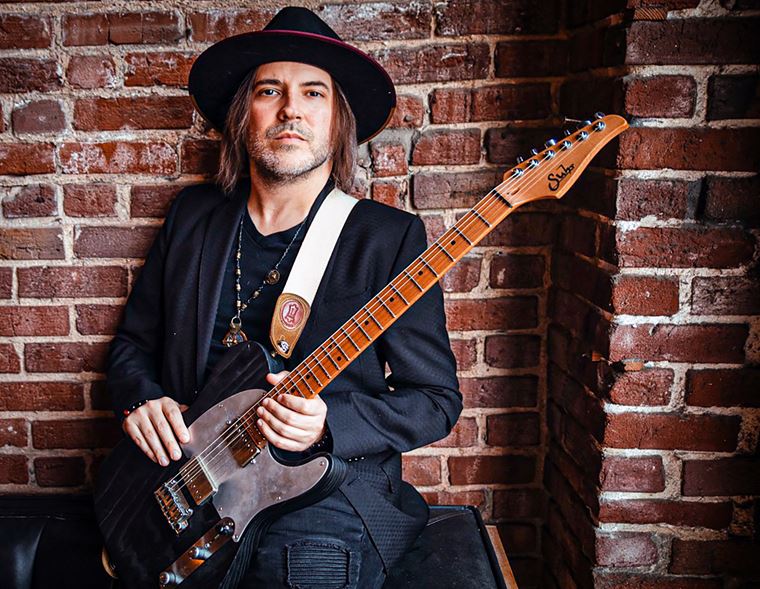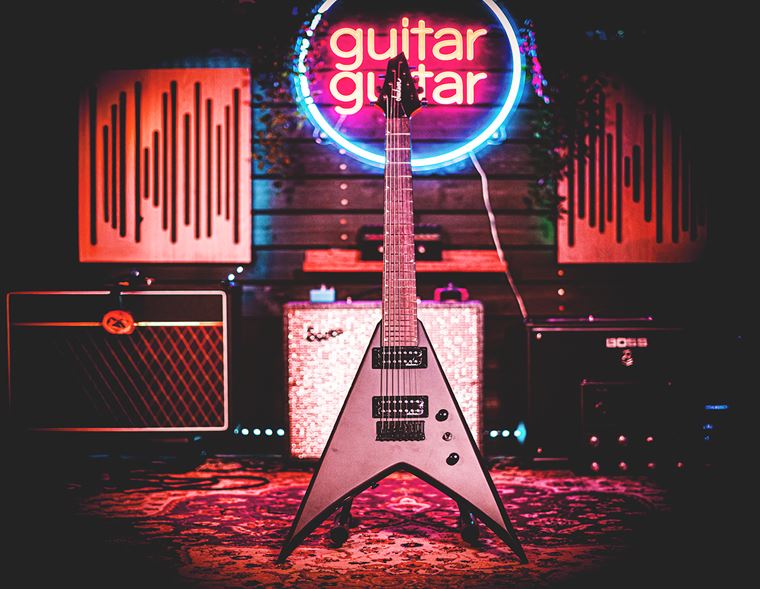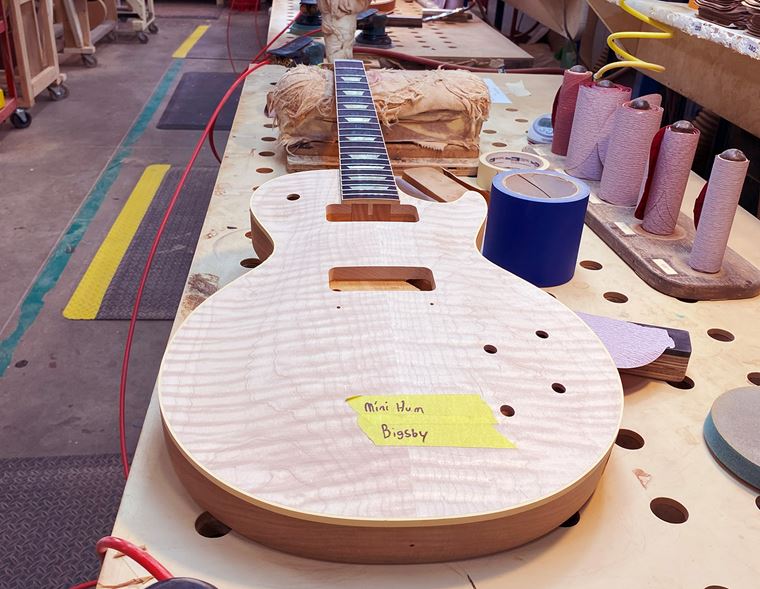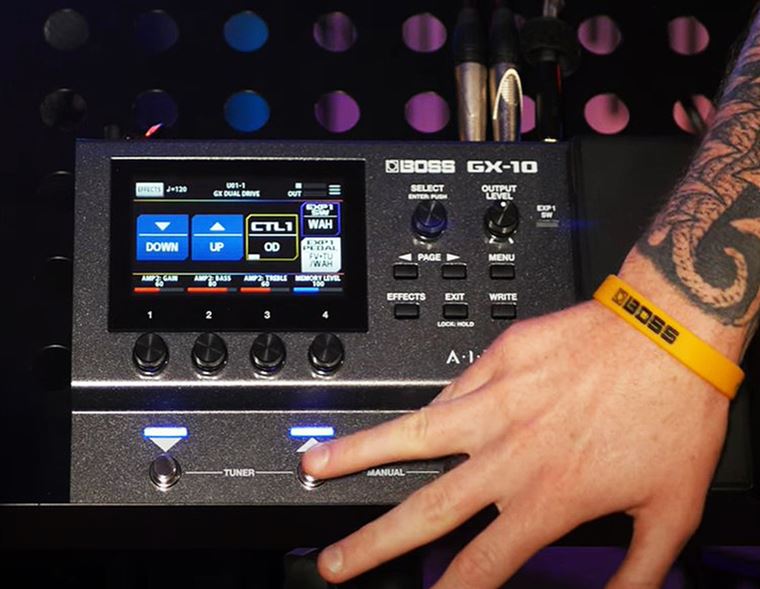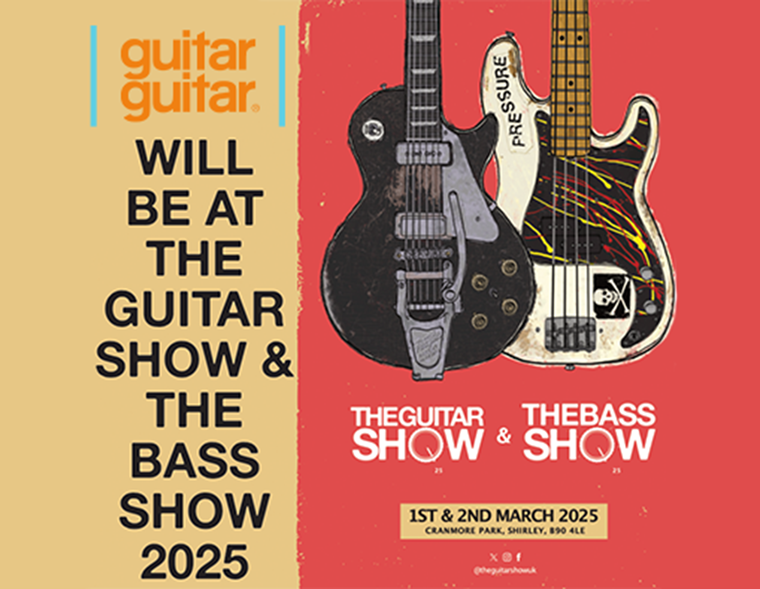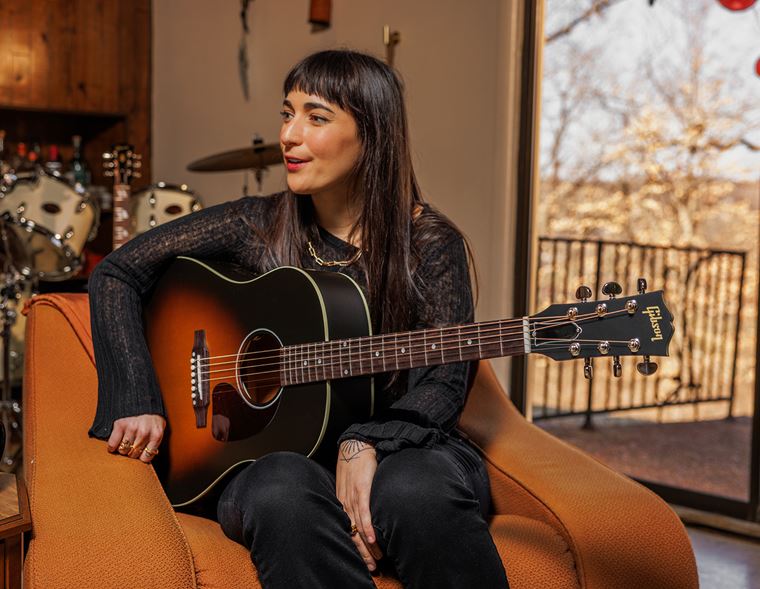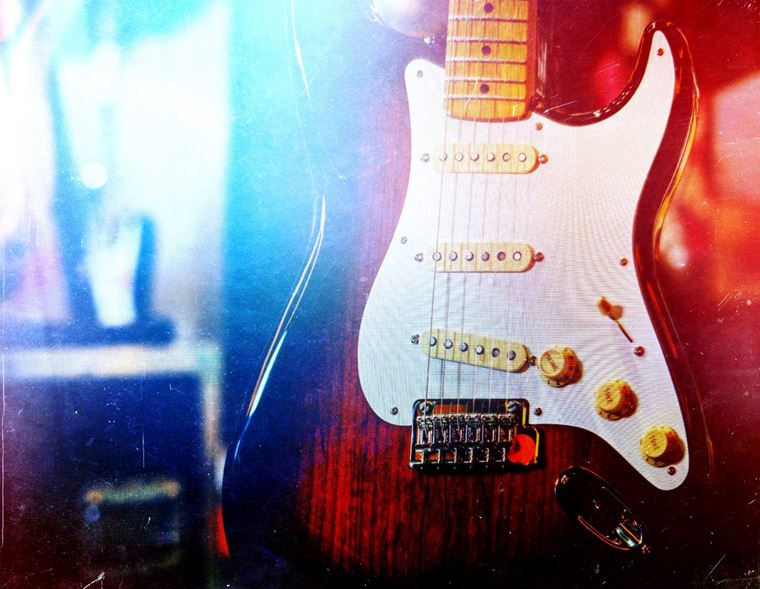Accessories: Introduction to Slide Guitar (Updated for February 2025)
Slide guitar is one of those strange phenomena: everyone knows about it, even before they begin learning to play guitar: everyone buys a guitar slide early on and gives it a shot without really knowing what to do and then it dawns on them that there is so much myth and legend involved with the discipline, it’s difficult to know where to go! Some people take it further and learn open tunings etc whilst others lose enthusiasm and relegate their brief journey to that mysterious part of their brain entitled ‘I’ll Go Back To That Another Time’. We’ve all done it!
At face value, slide guitar is pretty straightforward: you wear a cylinder of glass or metal of some description and use it instead of fingers on the strings above your guitar’s fretboard. However, some people go a little further and get discouraged by details (or received wisdom from other players) like: you need to hike up your guitar’s action; you need to retune your entire guitar to an open tuning; you need super heavy strings…there’s a lot of talk about the rights and wrongs of slide playing and it can really put off fledgling players!
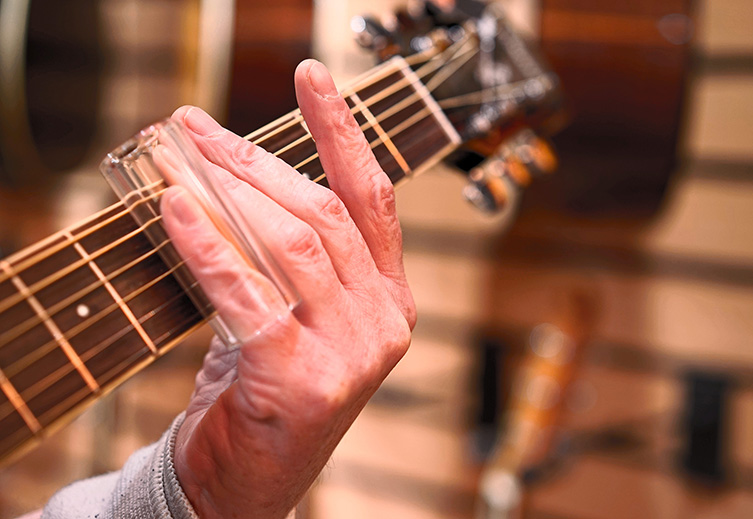
So, this article is going to look at some of the varieties of slides available and some of the greatest practitioners of slide playing over the years. Firstly though, let’s dispel some rumours and half-truths!
It’s definitely true that having your action (string height essentially) higher is beneficial: you’ll not need to worry about accidentally knock the frets and damaging them. Plenty of players don’t bother though: keep your touch fairly light with your slide hand and you can absolutely play slide on your main electric without modification. Acoustic guitars don’t tend to have this problem since they traditionally have slightly higher action anyway.
Heavier strings? Sure, if you prefer the sound but that’s subjective, not fact. As always, the deeply influential and deeply iconoclastic Billy Gibbons is proof that breaking the rules reaps results: he is a real connoisseur’s slide player and is known for his ridiculously light string gauge, often left in standard tuning too. If you can set aside a guitar especially for slide then yeah, bigger strings are better (there is more resistance for the slide to travel on plus there is an argument that bigger strings equals bigger tone but the jury’s out there) but this article is all about getting people to play so we think standard gauge tens will do just fine. Big Wreck’s Ian Thornley is a modern player who has no qualms about yanking a bottleneck across his main guitar (in standard tuning) to absolutely mesmerising effect!

But what are the best tunings for slide? And what finger do I use? Okay, let’s address the finger question first: it’s up to you! Popular consensus would indicate the third finger: you have a few fingers to the left for muting the unplayed strings and a spare pinky for grabbing notes in front of the slide. Your humble scribe personally prefers the pinky: the slide is the dominant thing so moving the entire hand in one guided motion seems to reap results. It is very much up to the player though: there is no right or wrong!
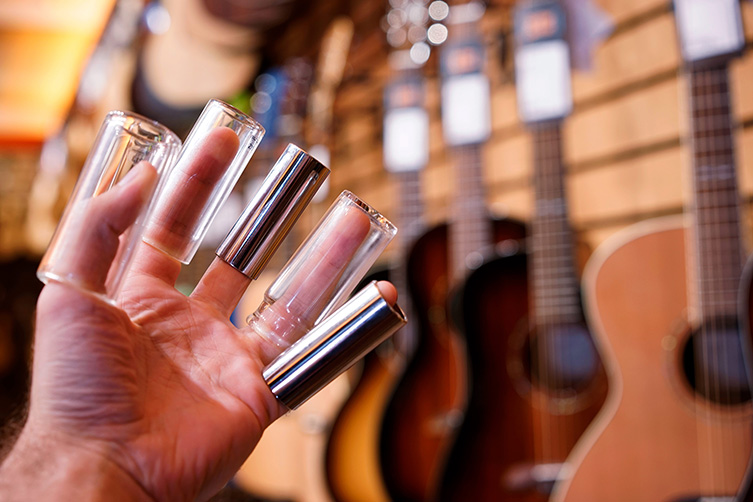
As for tunings, we already know that plenty of players stick with standard tuning so keep that in mind but for those real raunchy overtones, there are a few stone-cold classic tunings: open G (low to high: D-G-D-G-B-D) and open D (D-A-D-F#-A-D) being the two most used. These tunings give you a big satisfying chord when you rake your pick (or fingers, more of which later) across all six strings. Experiment with these tunings and you’ll be surprised how quickly you start sounding awesome. You can also play ‘over’ the neck a la Adrian Belew and Dave Hole if you feel like it: it’s more akin to how you’d play a lap steel and that may make sense to you.
Okay, now you know the lowdown with the instrument side of things, it’s time to briefly look at some definitive players and the slides they prefer to use. We’ll start with a legend from nearly a century ago…
Blind Willie Johnson was a preacher and performer from Texas whose late 1920s recordings - including the spellbinding ‘Dark Was the Night, Cold Was the Ground’ - display his masterful acoustic Blues slide technique. For some of his most famous cuts, he used a penknife as a slide! He also plaintively hummed along with his guitar melodies, making for a ghostly sounding unison tone. This guy was an influence ON Robert Johnson, not the other way around! You don’t often hear that!
Next up we have Elmore James. Known as ‘King of the Slide Guitar’, James tore it up on guitar from an early age and made his name playing on a modified acoustic guitar with an electric pickup. His sound was known for being particularly violent and expressive, a mean compliment to his strong voice. James influenced a wide variety of artists from Keith Richards to Frank Zappa and defined much of the early Blues slide technique book. James favoured Open D tuning, a metal slide and had particularly impressive control over vibrato.
Moving ahead in time a little, one of the true greats of slide guitar is undoubtedly Duane Allman. Famous for using an old medicine bottle for a slide (and inspiring countless players to follow suit, pushing the prices of these generic bottles to nonsensical levels), Allman had a melodic and lyrical style that took the form beyond the standard rehashing of Elmore James’ bag of tricks. Duane favoured Open G and Open E tunings. Open E (E-B-E-G#-B-E) is just the same as Open D but a tone up. His Les Paul through cranked Marshall sound blew people away and inspired dozens of imitators, not least Joe Walsh from the Eagles, a master player in his own right. You can hear his ‘Southern Slide’ sound on Layla’s epic solo (no, Clapton didn’t play that bit either) as well as classic Allman Brothers cuts like ‘Hoochie Coochie Man’ and ‘Dreams’. Genius.
Ry Cooder is a multi-faceted musician and producer who has given the world more than just great guitar playing. Responsible for spearheading and producing the Buena Vista Social Club, the Cuban all-star band of pre-war music that has become the biggest selling World music album of all time, Cooder is something of an ethnographic-musicologist, as revered for his sublime taste as for his own intimidating musical ability. Slide plays a key part in Cooder’s guitar vocabulary: examples of his unparalleled playing can be found on records by the Rolling Stones, Frank Zappa & Randy Newman amongst countless others. His ‘Paris, Texas’ soundtrack is seminal and he has put his bottleneck twangings to fine use on Jazz, Chicano, African and Hawaiian styles of music too.
Ry favours a 50s model Martin 000-18 for his acoustic slide playing and has a dizzying range of electrics, though you mainly see him with modified Fender Stratocasters and old 60s Guyatone guitars. Ry plays with a heavy glass slide and prefers Open E and Open D tunings.
Bonnie Raitt is considered one of the greatest slide soloists ever, not to mention a great songwriter. Raitt has been going strong since the 70s and has performed with the Stones, Bob Dylan and a host of others. Bonnie’s number one guitar is an old Fender Strat with a 1965 body and a neck from slightly later. This is strung with gauge 13 (?!) strings and is tuned to Open A. Like Duane Allman and Ry Cooder, Bonnie Raitt prefers the feel and control of using bare fingers (no plectrum) when she plays with a bottleneck. Her preference here is for a Jim Dunlop glass type. Her superlative command over melody and drama is clear to her in her song ‘Spit of Love’.
Our final artist is this brief and by no means definitive shortlist of talent is Derek Trucks. Still under 40 years of age, Trucks has nearly three decades of pro playing under his belt! This man wastes no time! A child prodigy (and nephew of Allman Brothers Band drummer Butch Trucks), Trucks is now world-renowned as a true master of the South Slide style: he has been a member of the Allman Brothers Band since 1999 in addition to his own projects and his band with his wife Susan Tedeschi. An SG man, Trucks strings his Cherry Red Gibson models with gauge 11 strings, tuned to open E and he favours a Dunlop Blues Bottle for his slide.
So that brings us up to the here and now regarding our small selection of players. Most seem to prefer glass or metal slides, almost all of them play with heavier strings and all of them use alternate tunings! So, if you do find you enjoy playing with a slide, we wholeheartedly recommend following the example of these master artists. Music is about breaking rules though! Do your own thing!
With that in mind, what else is actually out there in terms of slides? We’ve spoken about glass and chrome (what the metal ones are made with these days) but you can also go for a brass slide. Brass gives a slightly darker sound than chrome and has more mass so is actually great for lighter strings (you don’t need to press the string much at all because the brass has its own weight doing that) and works great for resonator, acoustic and electric playing.
Ceramic slides are popular, too: Billy Gibbons and Joe Perry have their own signature models and the sound is somewhere between the liveliness of chrome and the mellowness of glass.
Tone Bars are also out there: you hold onto them rather than wear them so they work a lot better with lap steels, something of a separate issue really. Blues Bottles, like what Derek Trucks uses, are a modern take on the famous Duane Allman Coricidin bottle. They have a totally authentic vibe but do bear in mind they do not cover the entire length of the fingerboard. But hey, if it’s good enough for Duane and Derek…
Slide guitar can be a wild and exciting sounding after you get the hang of it: there really is no predefined way to play, either! Yes, you can and should study the classic solos from Duane Allman and Ry Cooder but you should also just see what happens when you introduce your own personality and sensibilities to things. Slides are great for textures and special effects too and, considering the initial financial commitment is minimal, they bring you a whole new universe of dramatic new sounds. Pick a finger, stick a guitar slide of your choice on there and go for it!
To round things off, here's a recent video we made on introductory slide techniques and approaches. Whilst not experts, Keiran and Ray have picked up plenty of insights over the years and they ain't afraid to share them!
Good luck with your slide playing, whichever way you decide to take it in your music!


